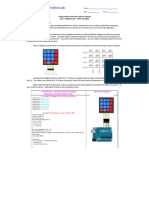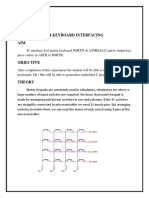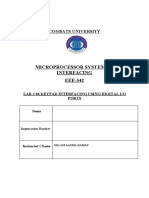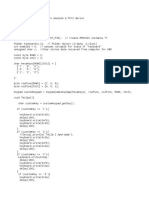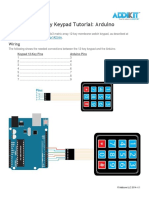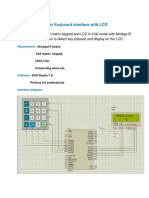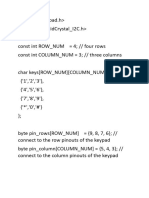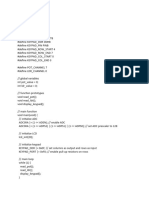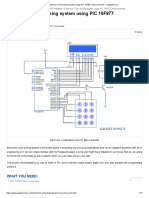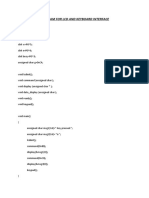0% found this document useful (0 votes)
160 views2 pagesKeypad - I2C.cpp - Bloco de Notas
This library allows for the use of a matrix keypad connected via I2C. It uses a key encoder and interrupt pin to detect key presses. The library initializes the keypad with an address and interrupt pin. It provides functions to begin using the keypad, get the pressed key character, and get the pressed key number.
Uploaded by
Jackson FerreiraCopyright
© © All Rights Reserved
We take content rights seriously. If you suspect this is your content, claim it here.
Available Formats
Download as PDF, TXT or read online on Scribd
0% found this document useful (0 votes)
160 views2 pagesKeypad - I2C.cpp - Bloco de Notas
This library allows for the use of a matrix keypad connected via I2C. It uses a key encoder and interrupt pin to detect key presses. The library initializes the keypad with an address and interrupt pin. It provides functions to begin using the keypad, get the pressed key character, and get the pressed key number.
Uploaded by
Jackson FerreiraCopyright
© © All Rights Reserved
We take content rights seriously. If you suspect this is your content, claim it here.
Available Formats
Download as PDF, TXT or read online on Scribd
/ 2

